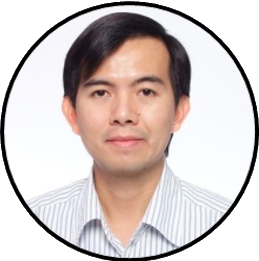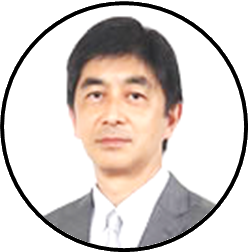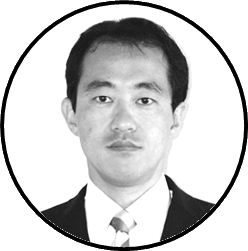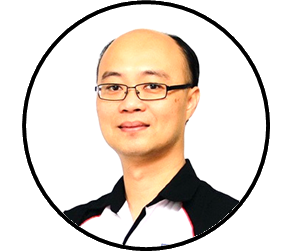Keynote Talk 1:

“A remote healthcare monitoring system using radio over fibre network”
By Prof. Ir. Dr. Kaharudin Dimyati
| ABSTRACT |
With the emergence of Wireless Sensor Network (WSN), developing wireless health care monitoring systems employing various body technologies has become a keen area of interest in many countries of the world today. Wireless body sensor devices can reach an advance level of human body monitoring utilizing various transmission and data analytics techniques. Thus, wearable wireless sensor-based system is intended to provide better personal health management, ubiquitous monitoring health condition, better quality treatment and healthcare, along with allowing efficient circuit integrations, reliable vital signal measurements, low operation costs and optimum power usage. Therefore, the work presented in this keynote aims to integrate artificial intelligence in the domain of healthcare monitoring using mobile device and application, and wearable sensor patch with various ingestible sensors, which will be connected each other to make it an Internet of things-5G (IoT-5G) network. The IoT-5G based sensor networks are integrated where all the data will be securely transferred and stored
in hospital management databases. All the data base will be controlled by the system application which works as a platform and connected via optical fiber with all other databases of the patient’s present hospital. The AI based sensors will produce a computerized diagnosis for the different kind of diseases. Along with this application the platform will also have the ability to receive data/give commands to AI attached sensors which eventually helps to detect and predict the cancer’s normal and abnormal cells.
| BIOGRAPHY |
Prof. Ir. Dr. Kaharudin Dimyati received his BEng (Electrical) from University of Malaya in 1992 and PhD in Communication Engineering from the University of Wales Swansea, Swansea, UK in 1996. After completing his PhD, he serves University of Malaya at the Department of Electrical Engineering, Faculty of Engineering as Lecturer, Associate Professor and Professor. In Feb 2011, he joined Faculty of Engineering, National Defense University of Malaysia (NDUM) and in Feb 2016, he joined back University of Malaya until now. His research interest includes Wireless Communications, Optical Communications, Disaster Management and healthcare related applications. He has published more than 150 articles in journal and a large number of conference publications. He is a Chartered Engineer registered with the Engineering Council UK and a Professional Engineer with the Board of Engineers Malaysia. He is a Member of the IEICE, the IEEE and the IET.
Keynote Talk 2:

“Compact Metal-mountable UHF RFID Tag Antennas”
By Prof. Ts. Dr. Lim Eng Hock
| ABSTRACT |
In recent years, applications of UHF RFID tagging systems (860 MHz-960 MHz) have been growing rapidly in many sectors such as retail, logistics, transportation, and tracking management. Passive UHF tag, which is a transponder composed of a microchip and a microwave antenna, is able to provide long read range at low cost. However, mounting a UHF tag antenna on metal is challenging as its radiation performance can deteriorate significantly. When a tag antenna is placed in the vicinity of a conductive surface, the radiated fields of the image current and the antenna itself cancel out each other, resulting in poor radiation efficiency. In this talk, the design methodologies and tradeoffs of the metal-mountable UHF tag antenna will be discussed. Folding techniques will be introduced for designing various flexible tag antennas using the soft PET (polyethylene terephthalate) substrate. It will be shown that designing a UHF tag antenna usually requires strenuous effort to make tradeoffs between radiation efficiency, impedance bandwidth, and tag size.
| BIOGRAPHY |
Prof. Ts. Dr. Eng-Hock Lim was born in Selangor, Malaysia. He received his B. Sc. (Electrical Engineering) from National Taiwan Ocean University, M. Eng. (Electrical and Electronic Engineering) from Nanyang Technological University, and Ph.D. (Electronic Engineering) from City University of Hong Kong. He served as the Associate Editor of the IEEE Transactions of Antennas and Propagation from 2013 to 2016. Currently, he is a Professor at Universiti Tunku Abdul Rahman, where he is serving as the Chairperson of the Center for Communication Systems and Networks. He is the IEEE Malaysia Distinguished Lecturer for 2019-2020. His current research interests include RFID antenna design, reflectarrays/transmitarrays, and multifunctional antennas.
Keynote Talk 3:

“Related antenna measurements & EMC freq. band”
By Dr. Satoru Kurokawa
| ABSTRACT |
Recent progresses in wireless communication technologies are remarkable for broadband wireless internet and mobile communication systems. First step of 5th generation mobile network uses around 3.7, 4.5 and 28 GHz frequency bands in Japan. Radiated electromagnetic interference (EMI) measurement must be done in the radiated electromagnetic field intensity using broadband antennas up to 18 GHz. To evaluate the antenna characteristics for these frequency bands, we usually use double-ridged guided-horn antennas up to 18 GHz and WR-28 band standard gain horn antennas from 26.5 to 40 GHz as standard antennas. In this talk, we show our proposed free space far field antenna factor measurement method using time domain and pulse compression techniques for EMI broad band antennas. Further, we explain our proposed single antenna calibration method for EMI broad band antennas. Then, we also show our proposed single cut-plane near-field to far- field transform method for base-station antennas. Finally, we explain our developed bi-directional optical-fiber-link transceiver systems that can replace coaxial cables in many measurements.
| BIOGRAPHY |
Dr. Satoru Kurokawa received B.E. and M.E. degrees in electrical engineering from Chiba University, Chiba, Japan, in 1987 and 1989, respectively, and a Ph.D. degree from the Department of Communication and Computer Engineering, Kyoto University, Kyoto, Japan, in 2003. He has been working as a senior researcher and a group leader of electromagnetic field standard research group, National Metrology Institute of Japan, National Institute of Advanced Industrial Science and Technology, Ibaraki, Japan, since 2003. He was a general co-chair of 2017 IEEE Conference on Antenna Measurements & Applications (2017 IEEE CAMA). He is an advisory committee member of IEICE photonic applied electromagnetic measurement technical committee. He is an international secretary of IEC TC103. His research interests include antenna metrology, radio over fiber technology for antenna measurement, electromagnetic interference measurement, and time-domain measurements.
*More keynote speakers will be revealed soon
Tutorial Speaker

“Theory of Characteristic Modes and its Applications”
By Prof. Dr. Hiroyuki Arai
| ABSTRACT |
This talk presents the theory of characteristic modes (CM) given by Harrington and Mautz to show its basics and formulation in detail. A series resonance of RLC circuit, eigenmodes of CM, and natural modes are explained to show physical basics of antenna resonance. The CM analysis tools built in commercially available simulation software are also introduced with several examples. The accuracy of CM is verified by using fundamental antenna elements, such as a half wavelength dipole, one wavelength loop and rectangular microstrip antennas in terms of eigen-frequency and unloaded Q factor. In practical simulations, spurious and hybrid modes are often appeared in numerical results, in particular, due to the symmetry of antenna geometry. Mode tracking and current correlation used in the simulation improve the accuracy of CM analysis. This topic is presented by several examples. Typical applications of CM, smart phone antennas utilizing ground plane (chassis) of phone and HF antennas of platform such as aircraft and vehicle, are discussed how to use CM analysis in practical applications.
*More tutorial speakers will be revealed soon
Industry Speakers
Dr. Toru Fukasawa
(Mitsubishi Electric Corporation – Japan)
Dr. Toru Fukasawa was born in Tokyo, Japan. He received the B.E., M.E., and Ph.D. degrees in electronic engineering from Hokkaido University, Sapporo, Japan, in 1992, 1994, and 2004, respectively.,In 1994, he joined Mitsubishi Electric Corporation, Tokyo. His current research interests include small antenna analysis and measurement method.,Dr. Fukasawa is a senior member of IEICE. He received the Young Engineer Award in 2000 and the Best Paper Awards of the Institute of Electronics, Information and Communication Engineers (IEICE) in 2012, 2013, 2016, and 2018.
Prof. Ir. Dr. Koo Voon Chet
(COMREL Technologies – Malaysia)
Prof. Ir. Dr. Koo Voon Chet is currently a full Professor of Multimedia University, Malaysia. His research interests include remote sensing technologies, signal processing, data analytics and embedded system design. He is the recipient of the inaugural Young Engineer Award by the Institution of Engineers, Malaysia in 2004. Prof. Koo was the Chair of the IEEE Geoscience and Remote Sensing Society Chapter, Malaysia Section, a registered Professional Engineer, a Fellow of the ASEAN Academy of Engineering and Technology (AAET), and a senior member of IEEE. He is the founder of a spin-off company of the university research centre and also a principal consultant for several companies, including COMREL Technologies Sdn Bhd.
Mr. Lim Seng Tat
(ALTAIR – Malaysia)
Lim Seng Tat has professional work experience of more than 10 years, and specializes in Automotive vertical in the areas of Vehicle Safety. While being based out of Germany working for BMW, he was responsible for Pedestrian Safety evaluation, including CAE analysis, lab test validation & managing the development process. Since 2013 (joint Altair), he is leading a team responsible for Altair ASEAN’s pre & post sales activities, including undertaking benchmarks, customer supports, conducting training, etc. Presently, he is responsible for Altair’s regional business development in both Malaysia & Philippine territories.




